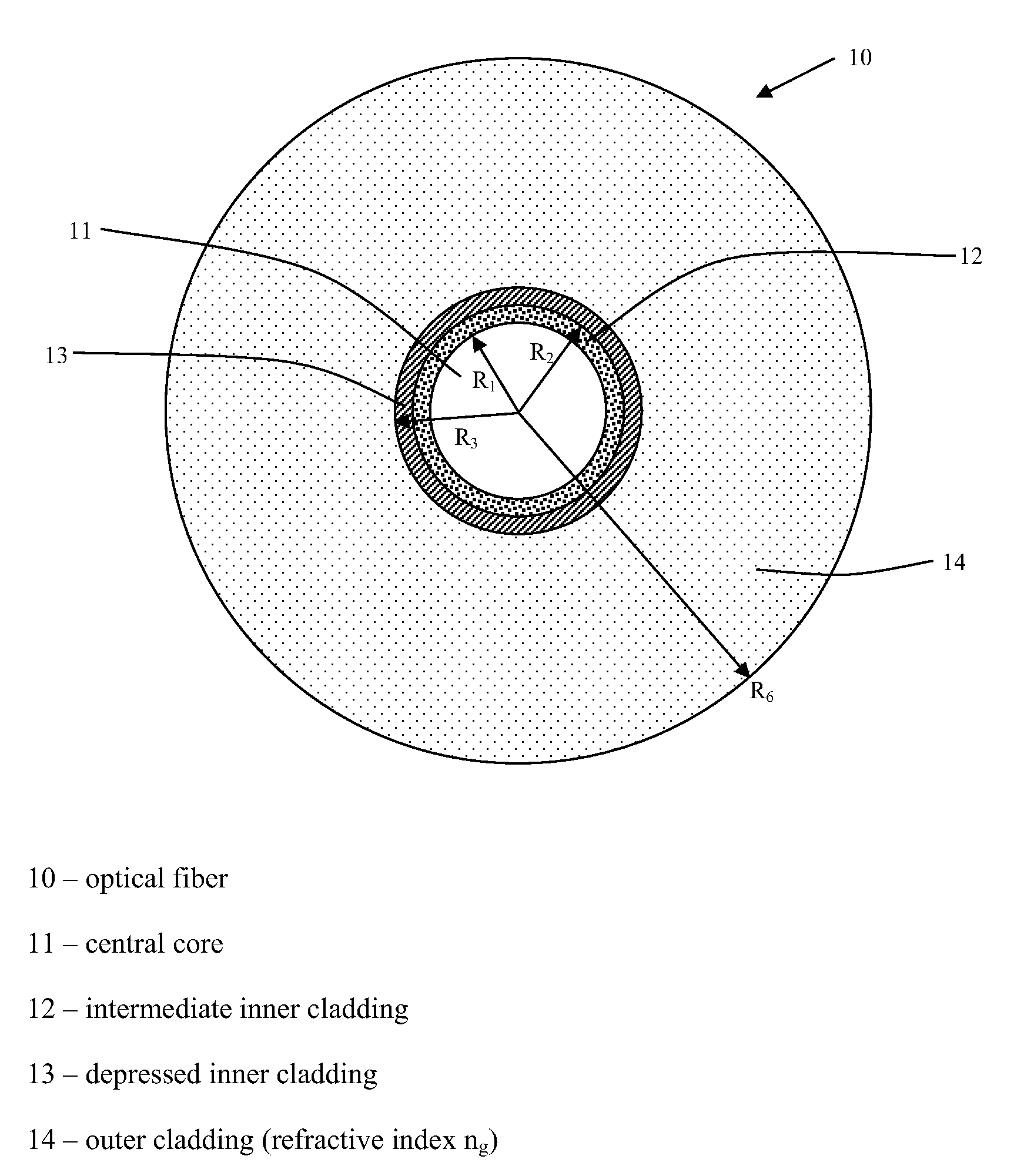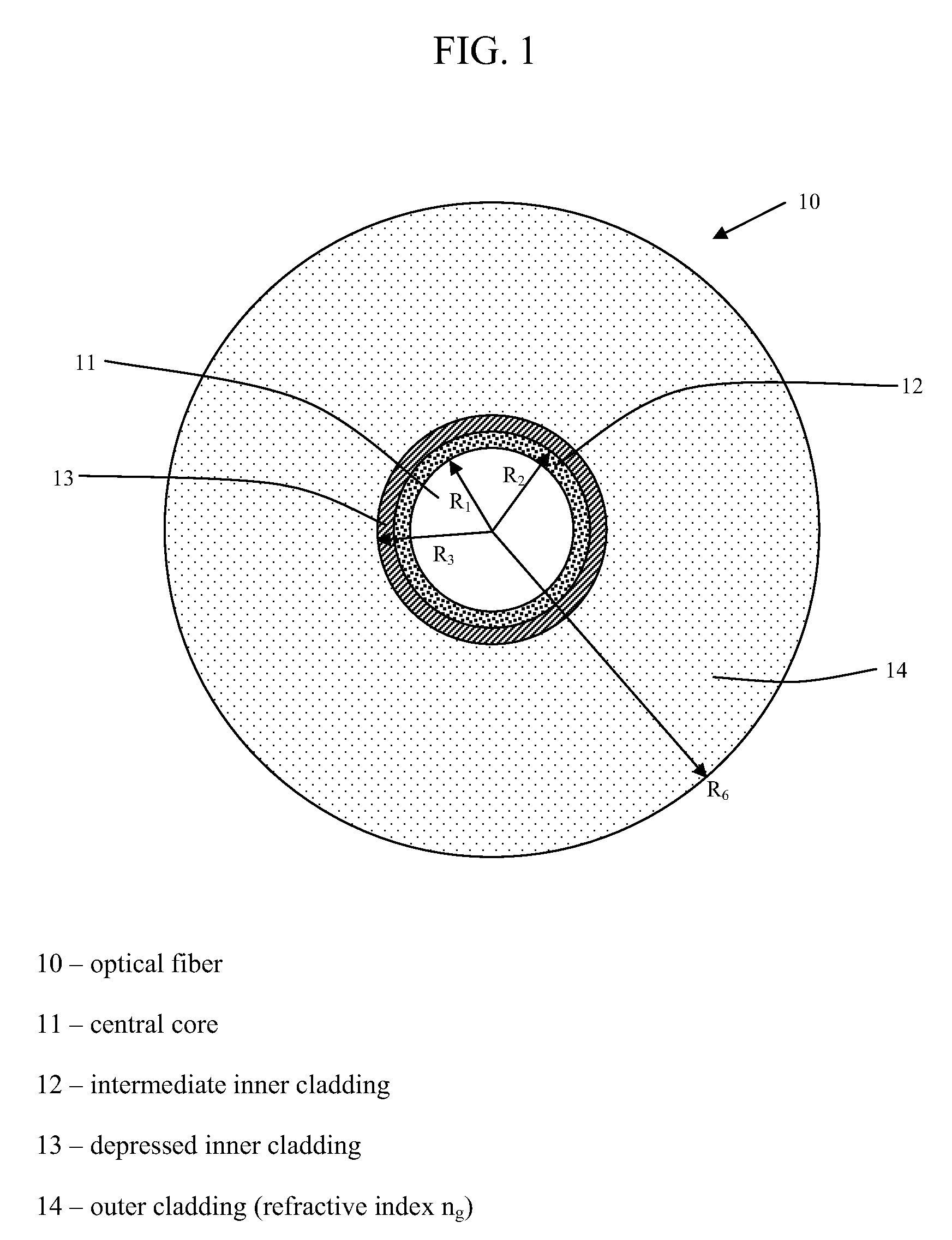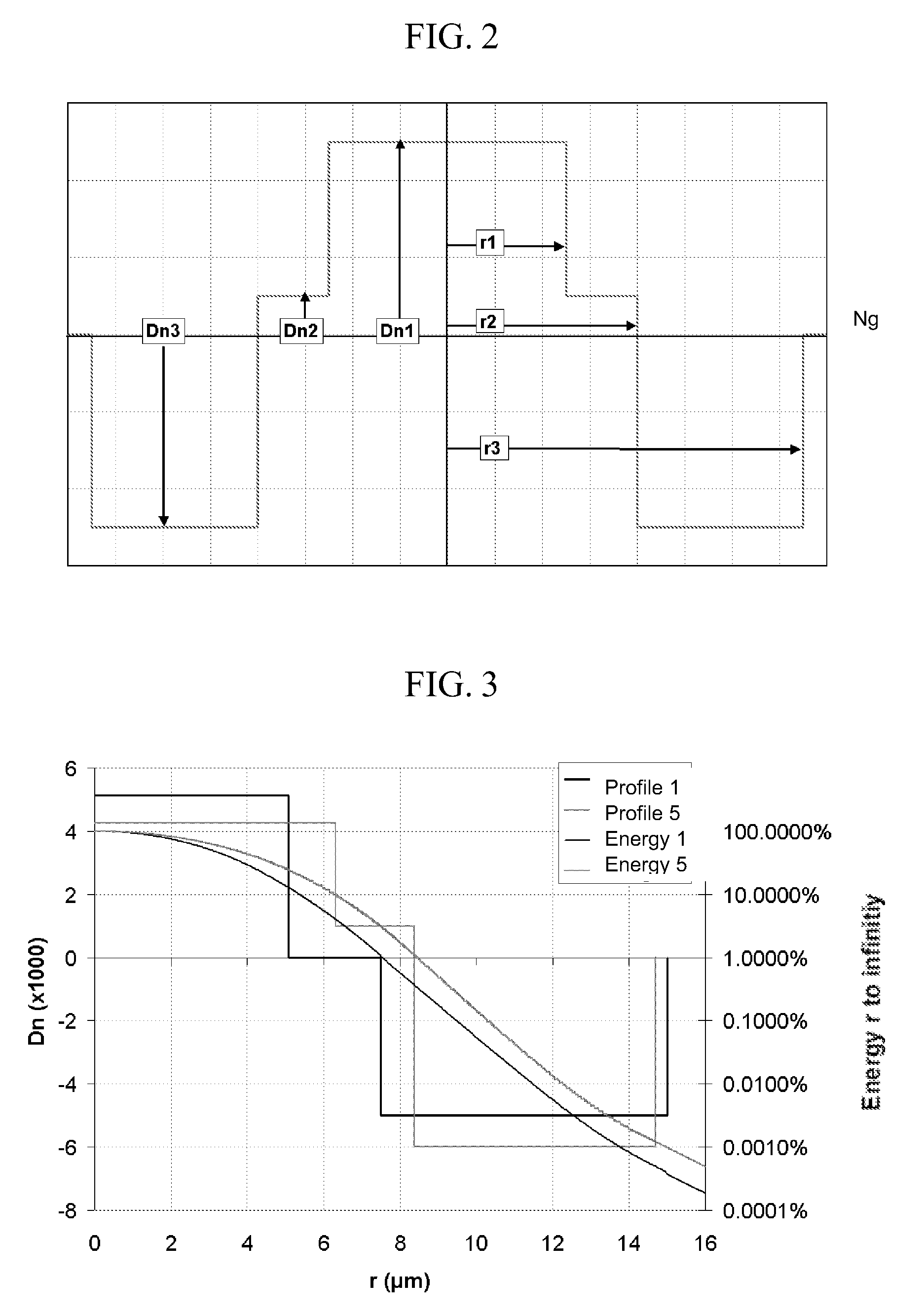Chromatic Dispersion Compensating Fiber
a chromatic dispersion and fiber technology, applied in the field of optical fiber transmission, can solve the problems of reducing the error rate at the receiver, ssmf induces high losses with respect to the quantity of dispersion produced, and the profile is slightly different, so as to improve the fom value and limit the bending and micro-bending losses
- Summary
- Abstract
- Description
- Claims
- Application Information
AI Technical Summary
Benefits of technology
Problems solved by technology
Method used
Image
Examples
Embodiment Construction
[0036]To compensate the negative chromatic dispersion or to offset an overcompensation, the invention proposes the use of a chromatic dispersion compensating optical fiber 10 having a particular refractive index profile with a central core 11, an intermediate cladding 12, and an inner depressed cladding 13, making it possible at a wavelength of 1550 nm to achieve a chromatic dispersion of 21 ps / nm·km or higher with a FOM value of 105 ps / nm / dB or higher. See FIG. 1.
[0037]With the presence of the depressed inner cladding, it is possible to achieve the desired chromatic dispersion value with low bending and microbending losses. The distancing of this depressed cladding from the central core makes it possible to limit transmission losses. The radius r3 of this depressed cladding is typically less than 16 microns to limit manufacturing costs related to depositing too large of a section of doped silica (e.g., doped with fluorine).
[0038]FIG. 2 schematically illustrates a possible refractiv...
PUM
 Login to View More
Login to View More Abstract
Description
Claims
Application Information
 Login to View More
Login to View More - R&D
- Intellectual Property
- Life Sciences
- Materials
- Tech Scout
- Unparalleled Data Quality
- Higher Quality Content
- 60% Fewer Hallucinations
Browse by: Latest US Patents, China's latest patents, Technical Efficacy Thesaurus, Application Domain, Technology Topic, Popular Technical Reports.
© 2025 PatSnap. All rights reserved.Legal|Privacy policy|Modern Slavery Act Transparency Statement|Sitemap|About US| Contact US: help@patsnap.com



